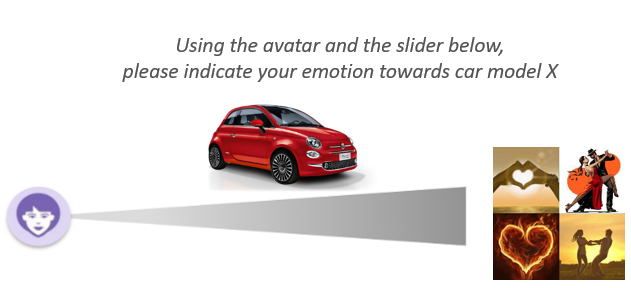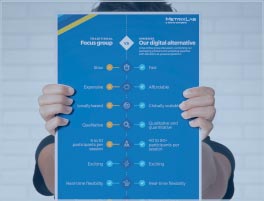Emotions matter: They influence consumers’ brand choice and purchase intent
Studies show that emotions play a key role in our decision-making. Emotions are the primary reason why consumers choose a specific brand over another. When faced with two similar products from different brands, emotions play a bigger role than information in our evaluation and decision process. Positive emotions towards a brand can also increase consumers’ brand loyalty; more so than judgements based on brand attributes.
Emotions also push us towards taking action. We are more likely to share ads and branded content that have strong emotional resonance, that is, content that makes us feel something. Emotional advertising also increases purchase intent; a connection that we too have found in our own studies into ad testing.

How to capture emotional associations with your brand, ad or product
By understanding how your consumers feel about your brand, ad or product you can take steps to address any potential issues or discrepancies. Firstly, you want to know whether it triggers an emotional response at all. Then, you should establish the intensity of any emotional resonance, whether it is positive or negative, and the type of positive or negative emotion. You can then attempt to trigger, alter or strengthen the emotions associated with your brand, ad or product, through your advertising, packaging design, branded content and other brand communication channels.
However, capturing consumers’ emotional responses is where it gets complicated. Consumers themselves are generally not able to rationalize or express how they feel, especially in the moment. Moreover, our emotional, instinctive thinking takes place in our implicit mind (or system 1 thinking). While our analytical, conscious thinking takes place in our rational mind (or system 2 thinking). And when consumers are directly asked to articulate their emotions, they tap into the rational part of their brain, rather than their implicit, emotional mind.
Therefore, measuring emotions requires a different approach. It requires an approach that reflects the fast, automatic and emotional associations of system 1; rather than the slow, explicit and rational processes of system 2. To measure the nature and intensity of emotions, we need to conduct research in a way that minimizes respondents’ control over their responses, thereby minimizing cognitive processing (system 2 thinking); while facilitating instinctive, emotional responses (system 1 thinking).
We’ve identified four techniques that help us do just that when capturing the emotional resonance of brands, ads and products through consumer surveys:
- Getting participants to choose an avatar to represent themselves – to help them project their emotions
- Minimizing the number of words on screen – to avoid cognitive processing
- Illustrating specific emotions through a validated collage of images – to evoke the intended emotional domain and help participants tap into their unconscious, implicit mind
- Using an unscaled virtual slider instead of scaled responses – to capture the intensity of emotions, while avoiding cognitive thinking

Our solution for capturing emotional resonance: AvayaA
Based on the four techniques listed above, we’ve developed a globally validated solution to capture emotional resonance. We call it AvayaA– a name which merges ‘avatar’ with ‘Yabba Dabba Doo!’ – the ultimate emotional expression of excitement and joy famously uttered by Fred Flintstone.
AvayaA is a plug-in survey module that can be integrated into our global portfolio of market research solutions. It captures emotional resonance and quantifies the emotional intensity associated with your brands, ads, ideas, product concepts and packaging designs. The module covers eight emotions identified by scientists and most relevant to a marketing context.
Try it out yourself!
Contact us for an AvayaA survey demo link and more information.




